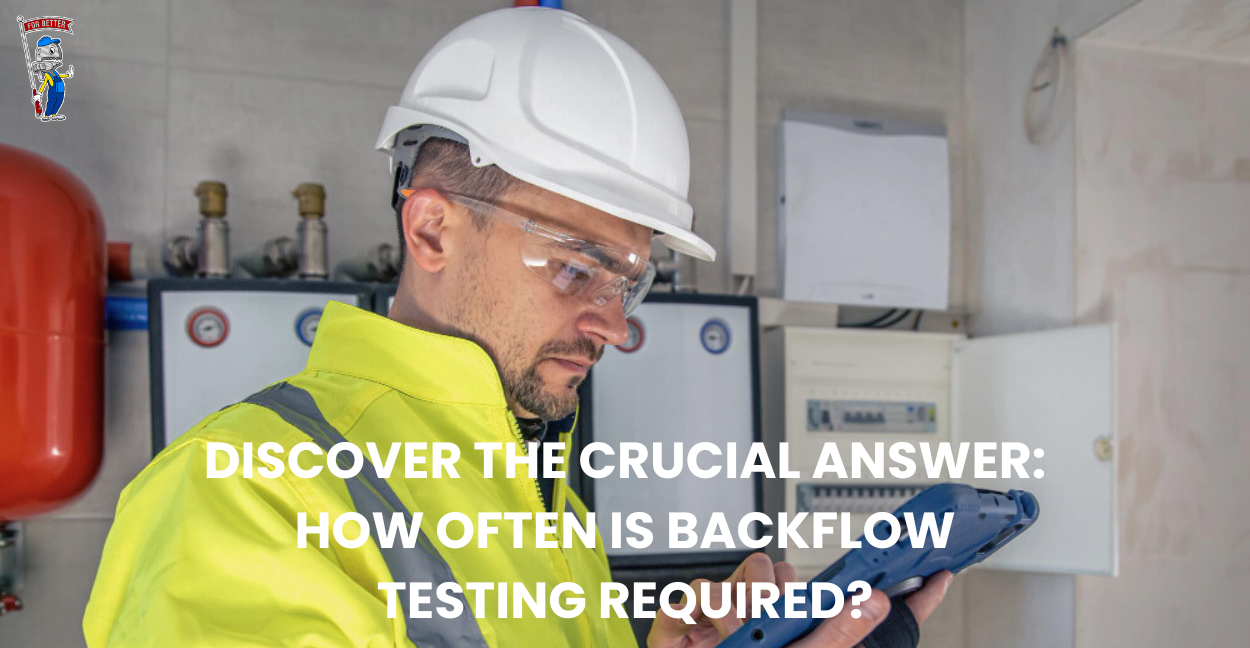Backflow testing is a crucial aspect of maintaining a safe and functional plumbing system. It involves assessing the integrity of water supply lines to ensure that water flows in the intended direction and does not get contaminated. In this article, we will discuss the frequency of backflow testing and its importance in various settings.
How Often is Backflow Testing Required?
Understanding the frequency of backflow testing is crucial for property owners to maintain regulatory compliance and protect public health.
Residential Properties
For residential properties, the recommended frequency for backflow testing is typically once a year. This ensures that backflow prevention devices, such as check valves and backflow preventer assemblies, are functioning correctly and effectively preventing the reverse flow of water.
Commercial and Industrial Properties
Commercial and industrial properties often have more complex plumbing systems and higher risks of backflow due to the nature of their operations. As a result, these properties may require more frequent backflow testing, such as semi-annual or quarterly testing, depending on regulatory requirements and risk assessments.
Factors Influencing Testing Frequency
Understanding the factors that influence testing frequency is crucial. Now we will explore the various factors that determine how often backflow testing and other water safety measures should be conducted. By understanding these factors, property owners can ensure compliance with regulations, mitigate risks, and protect public health.
Regulatory Requirements
One of the primary factors influencing testing frequency is regulatory requirements. Local, state, and federal regulations often mandate specific testing intervals for backflow prevention devices and other water safety measures. Property owners must be aware of these regulations and adhere to the prescribed testing schedules to avoid penalties and ensure legal compliance.
Type of Property
The type of property also plays a significant role in determining testing frequency. Residential properties typically have different testing requirements compared to commercial, industrial, or institutional properties. For example, residential properties may require annual backflow testing, while commercial properties may need testing more frequently due to higher risks of contamination.
Risk Assessment
Conducting a thorough risk assessment is essential in determining the appropriate testing frequency. Properties located in areas with higher risks, such as industrial zones or near chemical facilities, may require more frequent testing to mitigate potential hazards. Factors such as proximity to sources of contamination, water usage patterns, and the complexity of the plumbing system can all influence the risk assessment and testing frequency.
Previous Testing Results
The results of previous testing can also influence the frequency of future testing. If issues or deficiencies were identified in previous tests, property owners may need to increase the frequency of testing to ensure that corrective measures are effective and that water safety is maintained.
Maintenance Practices
Regular maintenance of plumbing systems and backflow prevention devices can also impact testing frequency. Well-maintained systems are less likely to experience issues that necessitate frequent testing. Property owners should implement a proactive maintenance schedule and ensure that backflow prevention devices are inspected and maintained according to manufacturer recommendations.
By understanding and addressing these factors, property owners can ensure water safety, regulatory compliance, and protection of public health.
For professional backflow testing services in Fairfax, VA and water safety solutions, contact Backflow Services Done Right today. Our team of experts will ensure that your property meets regulatory requirements and maintains the highest standards of water safety.
Benefits of Regular Backflow Testing
1. Early Issue Detection
Regular testing allows for the early detection of potential issues in plumbing systems. By identifying problems such as leaks, pressure fluctuations, or faulty components early on, property owners can take proactive measures to address these issues before they escalate into costly repairs or disruptions in water supply.
2. Prevents Contamination
One of the primary benefits of regular testing is its role in preventing water contamination. Testing helps ensure that backflow prevention devices are functioning correctly, preventing the reverse flow of water and the potential contamination of potable water with harmful substances. This is crucial for maintaining water quality and safeguarding public health.
3. Regulatory Compliance
Many jurisdictions have regulations that require regular testing of backflow prevention devices and other water safety measures. Adhering to these regulations not only ensures legal compliance but also demonstrates a commitment to water safety and responsible property management.
4. Extends Equipment Lifespan
Regular testing and maintenance can extend the lifespan of plumbing equipment and components. By identifying and addressing issues early, property owners can avoid premature wear and tear, corrosion, and other damage that can lead to costly replacements.
5. Cost Savings
Proactive testing and maintenance can result in significant cost savings in the long run. By addressing issues early, property owners can avoid expensive repairs, water damage, and potential legal liabilities associated with water contamination or system failures.
6. Peace of Mind
Regular testing provides peace of mind for property owners, knowing that their plumbing systems are functioning properly, and water safety measures are in place. This peace of mind extends to occupants, customers, and stakeholders who rely on a safe and reliable water supply.
Ensure the safety and integrity of your plumbing systems with regular testing and maintenance. Contact Us today to schedule professional testing services and enjoy the numerous benefits of proactive water safety measures.
The Backflow Testing Process
1. Initial Assessment
The process begins with an initial assessment conducted by a certified technician. During this assessment, the technician identifies the specific backflow prevention devices installed in the plumbing system. These devices, such as check valves and backflow preventer assemblies, are designed to prevent the reverse flow of water.
2. Testing Procedures
Once the devices are identified, the technician proceeds with various testing procedures to evaluate their functionality. One of the primary tests conducted is the differential pressure test. This test assesses how the backflow prevention devices respond to changes in water pressure, ensuring they can effectively prevent backflow under different pressure conditions.
3. Pressure Fluctuation Simulation
The testing process also involves simulating pressure fluctuations to mimic real-world scenarios. This simulation is crucial because water pressure can vary throughout the day due to usage patterns and external factors. By simulating these fluctuations, technicians can assess how well the backflow prevention devices maintain their functionality and prevent backflow during pressure changes.
4. Record Keeping
Detailed record-keeping is an essential aspect of the backflow testing process. Technicians maintain comprehensive records of the testing procedures, including pressure readings, device functionality, and any observations made during the testing process. These records serve as documentation for compliance purposes and provide a reference for future testing and maintenance.
5. Reporting and Recommendations
After completing the testing process, the technician generates a detailed report summarizing the findings. This report includes the results of the differential pressure test, observations regarding device functionality, and any recommendations for repairs or maintenance. If any issues or deficiencies are identified during testing, the technician may recommend corrective measures to ensure the proper functioning of backflow prevention devices.
Backflow Services Done Right | Expert Backflow Solutions for Your Property
Are you concerned about the safety of your plumbing system and the quality of your water supply? Look no further! Our team of certified technicians specializes in professional backflow testing, repair, installation, and maintenance services in Fairfax and Arlington.
Protect your property and ensure water safety with our comprehensive backflow testing process. Our certified technicians conduct thorough assessments, simulate pressure fluctuations, and provide detailed reports with actionable recommendations. Whether you need backflow prevention device installation, repairs, or ongoing maintenance, we’ve got you covered.
Contact us today to schedule your backflow testing and explore our range of backflow services. Trust us to keep your plumbing systems in optimal condition and safeguard your water supply. Your safety and peace of mind are our top priorities!



